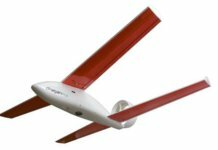Since the implementation of its Part 107 rules for commercial drone operators, the Federal Aviation Administration (FAA) has approved 81 authorizations for flights in Class D and E airspace and issued 36 waivers of Part 107 provisions to drone operators who applied after the rule’s effective date.
However, citing “incorrect or incomplete information” on applications, the agency has had to reject 71 waiver requests and 854 airspace applications.
For example, says the FAA, many applicants request too many waivers or request waivers for flights in types of airspace for which the agency is not yet granting approvals.
Under the new rulemaking, Part 107, the FAA closed the door on operations taking place at night, beyond the visual line of sight of the operator and directly over people. However, entities can apply for a separate waiver to operate under these parameters and others not prescribed in Part 107.
For applicants seeking to fly at night, for example, the FAA says they need to provide the following:
- A method for the remote pilot to maintain visual line of sight;
- A method for the remote pilot to see and avoid other aircraft, people on the ground, and ground-based structures and obstacles;
- A method by which the remote pilot will be able to continuously know and determine the position, altitude, attitude and movement of the drone; and
- A method to increase conspicuity of the drone to be seen at a distance of 3 statute miles, unless a system is in place that can avoid all non-participating aircraft.
Without a detailed description of how the applicant intends to meet performance-based standards for a separate waiver, the FAA says it cannot determine if a waiver is possible. In addition, applicants also should respond promptly to any request the FAA makes for additional information.
If the FAA does not receive a response after 30 days, it will withdraw the request.
Operators who want to fly in Class G (uncontrolled) airspace do not need FAA authorization. The FAA says it is currently processing requests to operate in Class D and Class E airport surfaces and will begin to consider requests for Class C flights after Oct. 31 and Class A flights after Dec. 5. Applications to fly in those areas before the indicated dates will not be approved, according to the agencies.
More information on applying for a waiver can be found here.









Where do you find a list of the approved airspace waivers? I went to the FAA’s website, but nearly all of the waivers listed are for daylight.